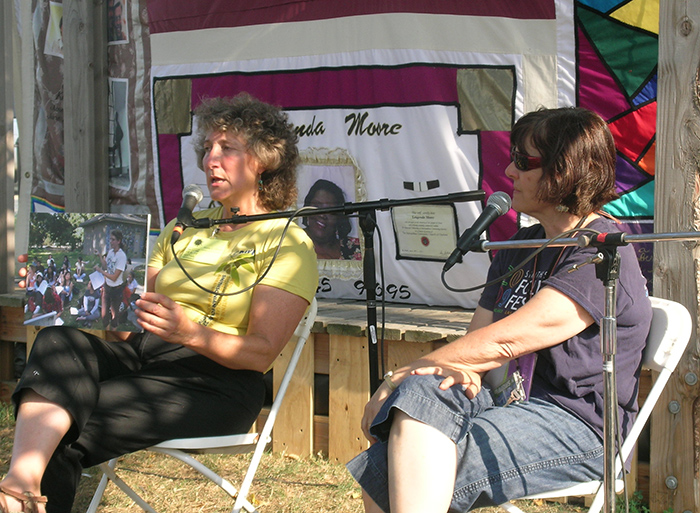Join the Conversation at The Commons

One of my favorite places on the Festival grounds is located right next to the Smithsonian Metro stop, tucked away behind some exhibit tents, underneath a large, shady tree and wood-latticed arbor. "The Commons" tent is an area used for discussion and demonstrations; it is the narrative stage in the Campus and Community program. One of the reasons why I find myself meandering back to that shady spot during my free time is because it is a space where I can interact directly with participants in an informal setting.
In The Commons, experts from participating universities and the USDA come together and hold discussions centered on certain themes or questions, for example, “Research into Action: Art and Science Fusion in the Classroom” and “Building on Tradition: Campus Traditions.” The atmosphere is casual and relaxed, and the discussions are often guided by audience questions and participation. I never thought I’d find myself interested in the fusion of art and science, but after listening to Diane Ullman, the associate dean at the College of Agricultural and Environmental Sciences at UC Davis, talk about her interactive, sculpture-based entomology classes for five minutes, I was hooked.
For the participants, The Commons is a space where they can meet each other. Many of the participants have interests and research that overlap and interconnect; in The Commons, they can make these connections and form new relationships with colleagues. The Campus and Community program has four theme-areas and participants from the Reinventing Agriculture and the Sustainable Solutions sections have much to discuss and learn from one another. Each discussion is recorded for the Smithsonian Archives, which later can be accessed for educational materials and post-Festival publications.

To me, the most exciting aspect of The Commons is the discussion environment. Campus and Community intern Kate Scott, who works at The Commons every day, explained that discussions here provide “a more informal way of getting people to be heard: both visitors and participants. It opens up subjects that maybe wouldn’t come up at the tent.” It is a more structured experience than wandering from tent to tent, but less formal than a lecture or performance. It enables visitors and other participants to make connections and meet experts face to face; to add their voices to the conversation, whether about quilting traditions in Indiana or the role of Land-grant Universities as research centers.
Visitors should come to The Commons, to see and experience it for themselves. As Campus and Community curator Betty Belanus explains, “It’s a nice cool, shady spot, so come sit down and join the conversation, come be a part of Festival history.”
James Mayer is an intern at the Smithsonian Center for Folklife and Cultural Heritage. He recently graduated from Macalester College, where he studied History and Classics.

